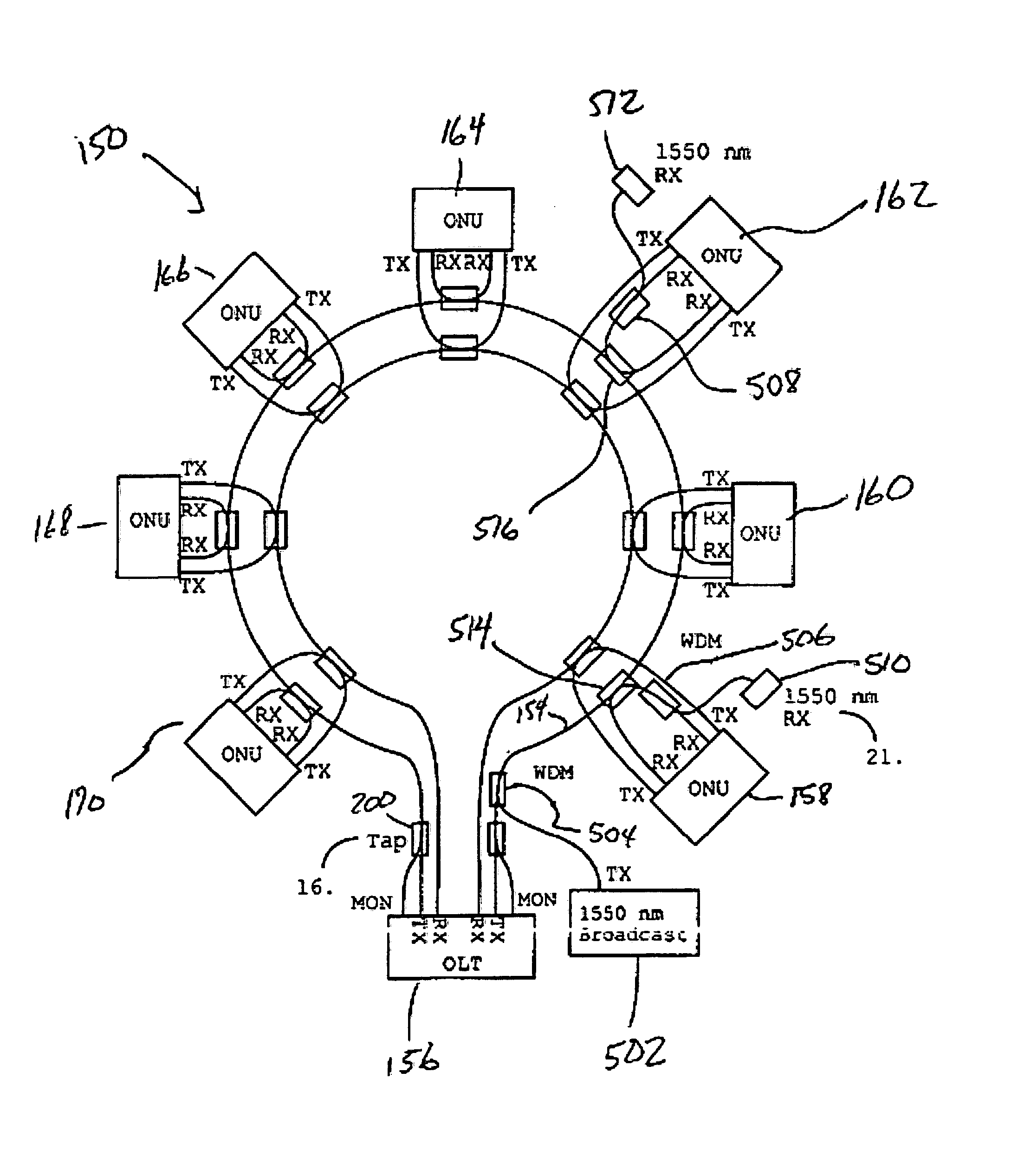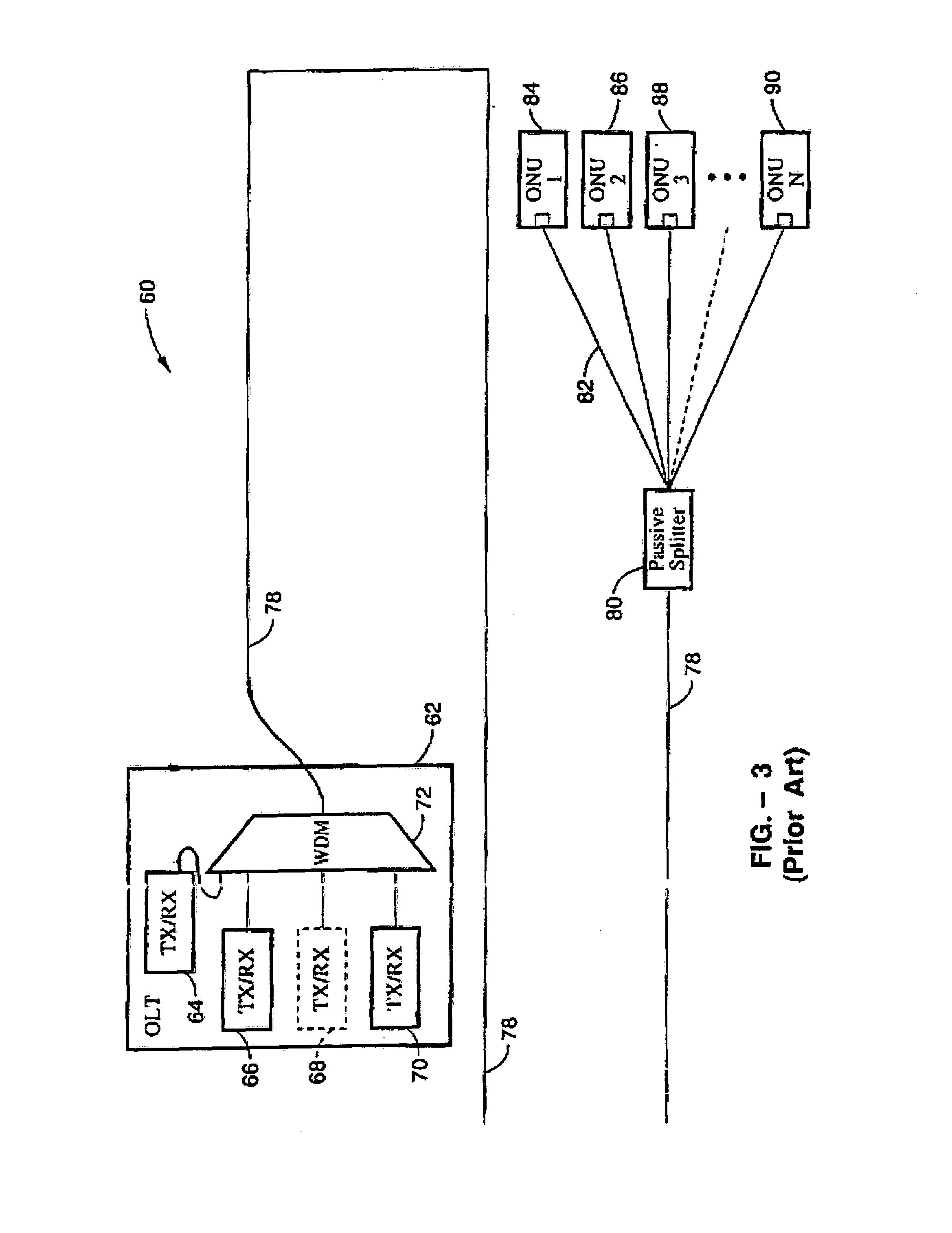Passive optical network
a technology of optical network and optical fiber, applied in the field of fiber optic network, can solve the problems of inefficient approach in terms of information handling capacity and complexity
- Summary
- Abstract
- Description
- Claims
- Application Information
AI Technical Summary
Benefits of technology
Problems solved by technology
Method used
Image
Examples
Embodiment Construction
[0045]A passive optical network according to one embodiment of the present invention is shown in FIG. 5 and is indicated generally by reference character 150. As shown in FIG. 5, the PON 150 employs a fiber ring 151 consisting of a downstream optical fiber 152 and an upstream optical fiber 154 so as to provide the PON 150 with built-in redundancy and monitoring, as will be explained. The PON also includes an optical line terminal (“OLT”) 156 at which opposite ends 153, 155 of the fiber ring 151 terminate. The OLT 156 preferably distributes high bandwidth information to multiple optical network units (“ONUs”) 158-170. Each ONU may deliver any configured combination of voice, data, and video service and may receive / transmit a portion of the total bandwidth within the network. The OLT 156 is preferably installed in a central office, hub, or point-of-presence and provides interfaces (not shown) to digital switches and routers utilizing, for example, E1 / T1, E3 / T3, OC-3, OC-N, Ethernet, A...
PUM
 Login to View More
Login to View More Abstract
Description
Claims
Application Information
 Login to View More
Login to View More - R&D
- Intellectual Property
- Life Sciences
- Materials
- Tech Scout
- Unparalleled Data Quality
- Higher Quality Content
- 60% Fewer Hallucinations
Browse by: Latest US Patents, China's latest patents, Technical Efficacy Thesaurus, Application Domain, Technology Topic, Popular Technical Reports.
© 2025 PatSnap. All rights reserved.Legal|Privacy policy|Modern Slavery Act Transparency Statement|Sitemap|About US| Contact US: help@patsnap.com



